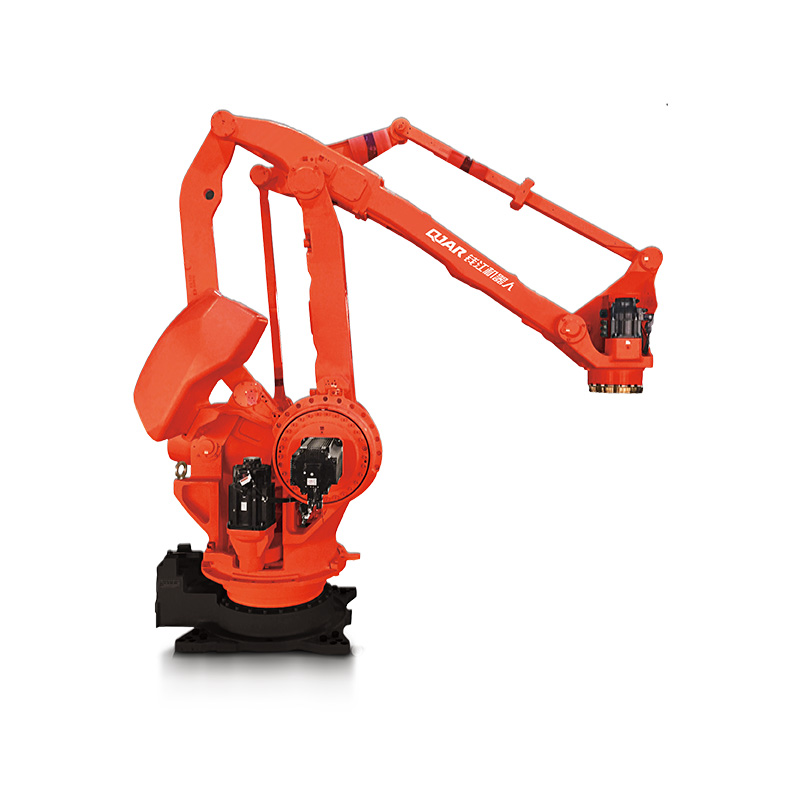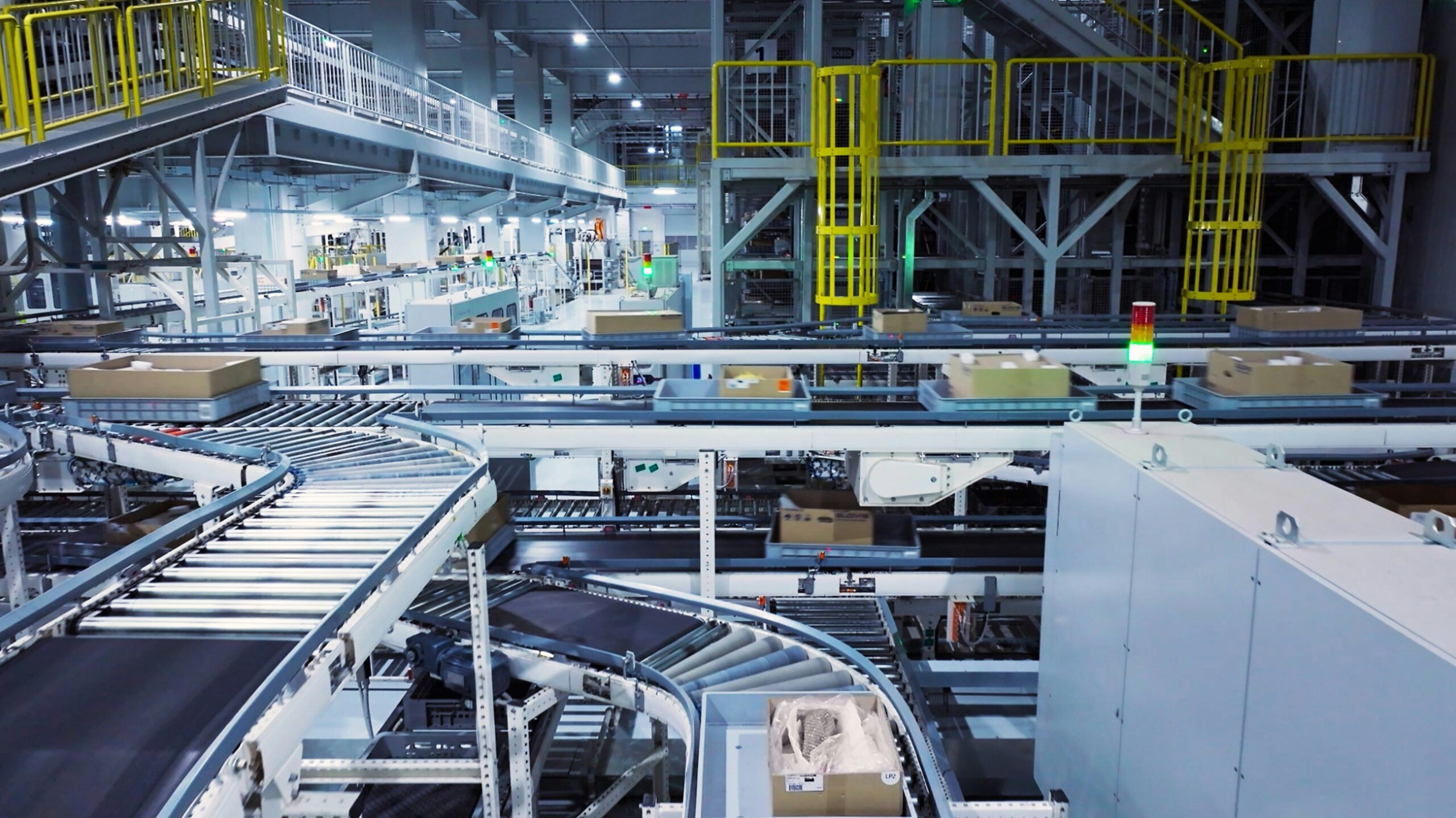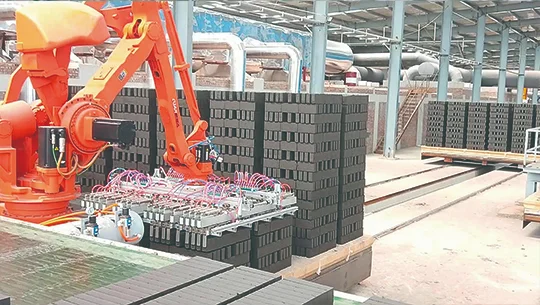Introduction
Nowadays, with the logistics industry changing so quickly, efficiency is not only desired but also necessary. The need for logistics companies to streamline their operations from production to distribution is driving an increasing amount of automation in the sector. Among all the innovations transforming this industry, palletizing robots stand out because they can dramatically improve the accuracy and speed of loading products onto pallets for transportation. The QJRB800-1 robotic arm is an excellent illustration of this advancement, particularly for heavy-duty applications like brick manufacturing, given its powerful 800kg payload and long 3159mm reach. This apparatus represents a significant development in robotics in logistics and not only personifies the combination of strength and accuracy.
Overview of Palletizing Robots
What are Palletizing Robots?
Palletizing robots are automated systems designed to efficiently stack goods onto pallets for storage and transport. These robots are integral to modern logistics operations, offering a mechanical precision and consistency that human labor cannot match. With capabilities ranging from picking and placing simple boxed products to arranging complex patterns on pallets, palletizing robots streamline the end-of-line packaging process, reducing the physical strain on workers and enhancing overall productivity.

Technological Specifications
The QJRB800-1 is a stellar example of the capabilities inherent in modern palletizing robots. This robot features an impressive armspan of 3159mm and can handle payloads up to 800kg, making it ideal for industries where large and heavy items are the norm. Its technical prowess is underlined by a repeat positioning accuracy of ±0.5mm, ensuring that each item is placed with exact precision. These specifications not only facilitate effective heavy-duty palletizing but also ensure stability and reliability in high-demand environments.
Palletizing Robots in the Logistics Chain
Enhancing Operational Efficiency
The integration of palletizing robots into logistics operations transforms traditional methods of handling goods. These robots increase the speed of the palletizing process significantly, allowing companies to meet tight shipping deadlines and manage larger volumes of goods. For instance, the QJRB800-1 can operate all axes at low power output, enhancing energy efficiency while maintaining high-speed performance. This capability is crucial in logistics, where time and cost savings are directly linked to energy consumption and operational speed.

Applications in Various Industries
While palletizing robots are widespread across various sectors, their impact is particularly notable in industries like brick manufacturing, where the products are heavy and the volume high. The QJRB800-1, for example, is tailor-made for such settings, capable of managing different types of bricks and accommodating the unique requirements of various kilns. Its application is not limited to heavy industries; in sectors such as food and beverage or pharmaceuticals, palletizing robots handle products with care, ensuring that delicate items are not damaged during the packing process.
Case Studies and Real-World Applications
Case Study Analysis
Real-world applications of palletizing robots provide clear insights into their efficacy. In one case study involving the Qianjiang robot, notably the QJRB800-1, the robot was deployed in a brick factory where it took over the palletizing process. The robot’s ability to support a variety of palletizing processes, such as double line stacking and simple destacking, has streamlined operations, allowing for a more efficient layout of the production floor and reducing labor costs significantly.

Comparative Benefits
Using palletizing robots in logistics has many advantages. Before the introduction of robots such as the QJRB800-1, manual labor was the main source of labor for many industries. This approach was less accurate as well as less efficient. Because of the precise movements of the robots, businesses have seen a noticeable increase in productivity since the advent of robotics in logistics. Additionally, the precise movements of the robots have reduced costs associated with workplace injuries and improved the quality of the products.
Conclusion
In order to increase the effectiveness and efficiency of supply chain operations, palletizing robots are becoming a necessary part of modern logistics. A great illustration of this technology in operation is the QJRB800-1 robotic arm, which shows how sophisticated robotics can satisfy the exacting requirements of the modern manufacturing and distribution industries. The importance of robotics in logistics will be highlighted by the growing reliance on such sophisticated automation as industries develop and grow.
The integration of palletizing robots presents a compelling solution for logistics managers and industry leaders seeking to increase operational efficiency and lower costs. These robotic systems increase overall safety and dependability while streamlining operations. Making an appointment for a consultation with robotics experts to discuss how palletizing robots can be incorporated into your operations could be the first step toward revolutionizing your logistics operations.
